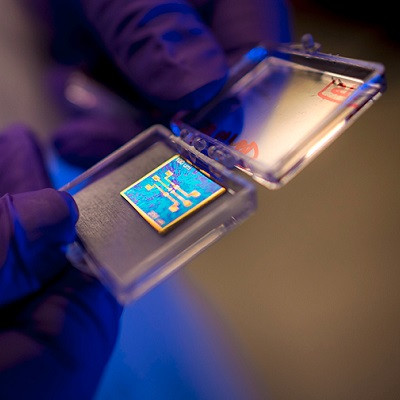
2021-04-25
Visited : 1056
For years, two-dimensional nanomaterials just one or a few atoms thick have been all the rage in the world of materials science. Take graphene, for example. This one-layer sheet of carbon atoms yields a material that is hundreds of times stronger than steel, highly conductive and super-flexible.
Oscar Vazquez-Mena, a professor of nanoengineering at the University of California San Diego Jacobs School of Engineering, is taking these types of materials to the next dimension. His research focuses on integrating different nanoscale materials together in 3D to create an entirely new generation of devices for environmental monitoring, energy harvesting and biomedical applications.
“It opens up so many more possibilities for what we could do with our nanoengineering tools,” said Vazquez-Mena, who recently received a five-year, $500,000 CAREER Award through the National Science Foundation for one such project.
The project involves combining graphene with semiconducting nanoparticles called quantum dots to create devices that can “see” a broad range of different wavelengths of light, such as infrared and ultraviolet, that are invisible to the human eye. These devices, called multi-spectrum photodetectors, could enable cameras to take pictures of infections, poisonous gases and harmful radiation; check for food quality or contamination; and monitor air and water quality. They could also aid vision at night and when it’s foggy.
Vazquez-Mena’s approach would make these devices ultra-thin. “Because we are working with nanomaterials, we can in principle engineer very thin photodetectors on the order of one micrometer, which could easily be integrated into smartphones and other mobile devices for convenient deployment outside of the lab,” he said.
An aspect of this project that is near and dear to Vazquez-Mena is mentoring and training the next generation of nanoengineers. He will be developing hands-on nanoengineering fabrication workshops for pre-college students, particularly underrepresented students at schools that may have limited resources and laboratory equipment.
This builds on Vazquez-Mena’s ongoing work promoting STEM education and research among migrant communities and children of deported parents, as well as UC San Diego transfer students. In recognition of his outreach work, Vazquez-Mena has been named an Emerging Scholar in 2020 by Diverse: Issues in Higher Education magazine. He was also recently named an Outstanding Engineering Educator by San Diego County Engineering Council.
“In my career, I had plenty of support and opportunities, so for me it is very important to provide these two things to students who come from underserved communities and have a strong desire to make discoveries and contribute to our society through science and technology,” said Vazquez-Mena.
At the start of 2020, Vazquez-Mena started a pilot program to help new Latinx/Chicanx transfer students at UC San Diego get involved in research activities. The program, called Research Paths for LatinX Students, is supported by the university’s Latinx/Chicanx Academic Excellence Initiative. Students attend Saturday sessions where they learn about the importance of research, different research opportunities on campus and strategies to join a lab. During the pandemic, the program shifted to offering virtual workshops on Coding, Arduino controllers and Machine Learning for students to continue learning at home.
Imaging the Brain with Ultrasound
In another research project, Vazquez-Mena is stacking nanostructures to build 3D arrays that can allow ultrasound to go through the skull and do non-invasive imaging and stimulation of the human brain. Such technology would be useful for treating brain disease and trauma without having to open the skull or insert wires and implants in the brain. It could also allow physicians to rapidly diagnose brain trauma in patients without having to perform costly MRI scans.
Getting ultrasound through the skull and into the brain is no easy task. The human skull is relatively thick and dense, so it either reflects or absorbs ultrasound waves before they can make it to the brain.
To get past this barrier, Vazquez-Mena is engineering a special kind of material—called a metamaterial—composed of nanostructures that can cancel the reflections created by the skull and essentially redirect ultrasound waves to go through it. The metamaterial is made of nanometers-thin membranes of silicon nitride and microscale acoustic cavities. Both components are arranged together in a 3D array that can enable the material to manipulate sound waves in ways that cannot be done with conventional materials.
“This is another example of building 3D constructions based on nanomaterials that achieve new and exciting properties,” said Vazquez-Mena.
Read the original article onUniversity of California San Diego.